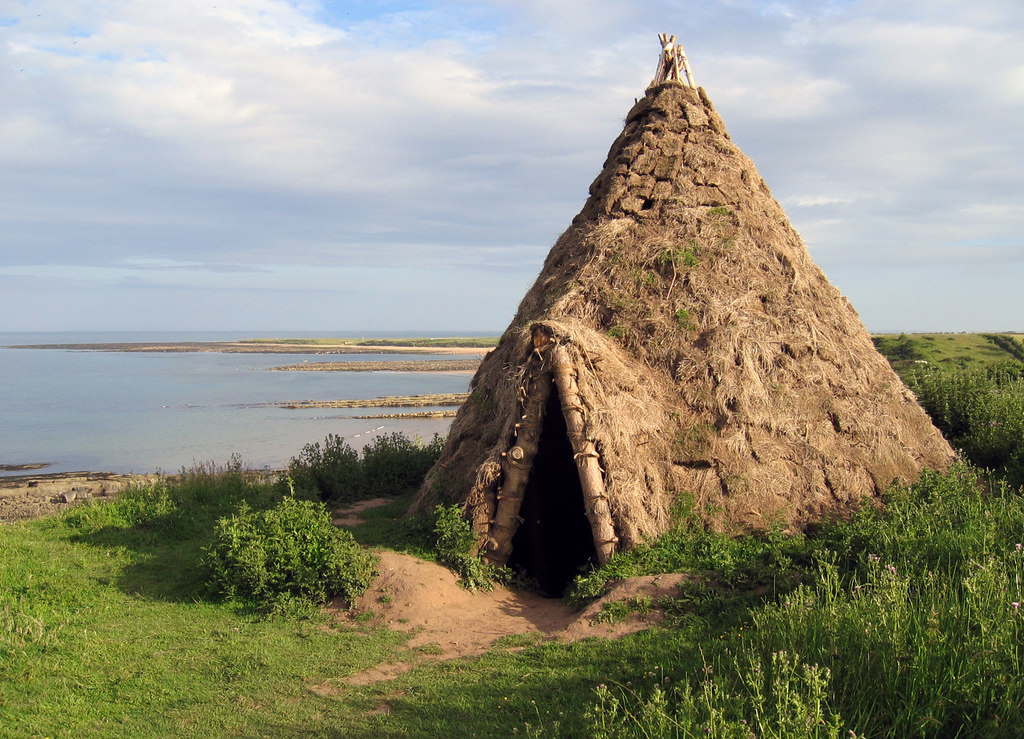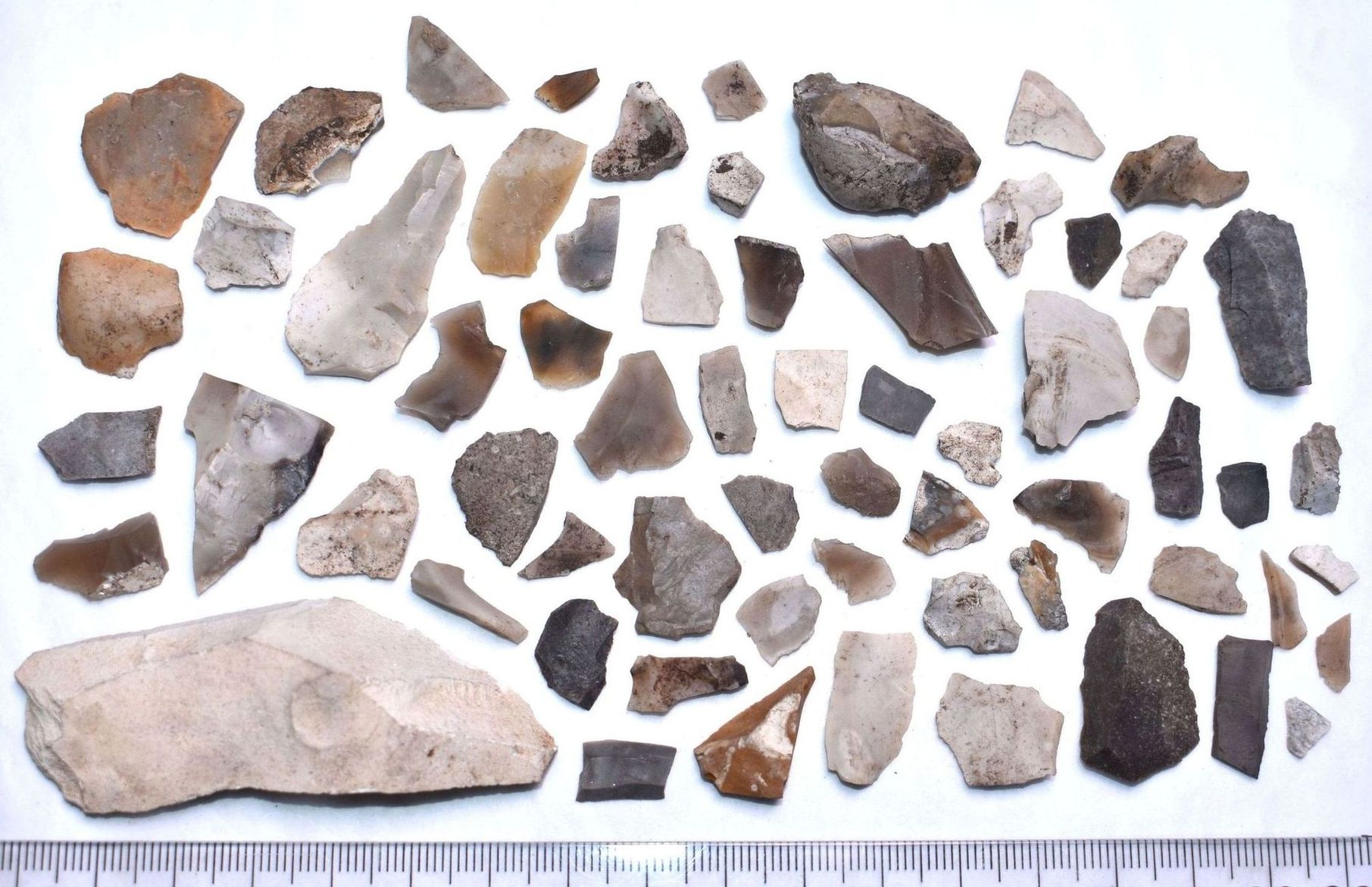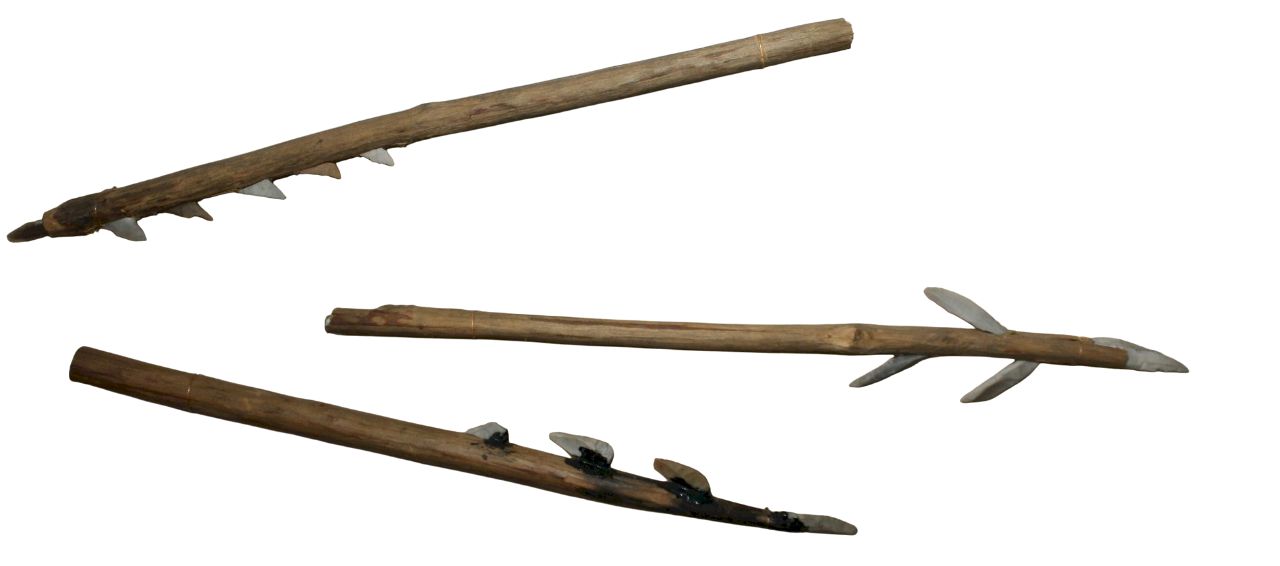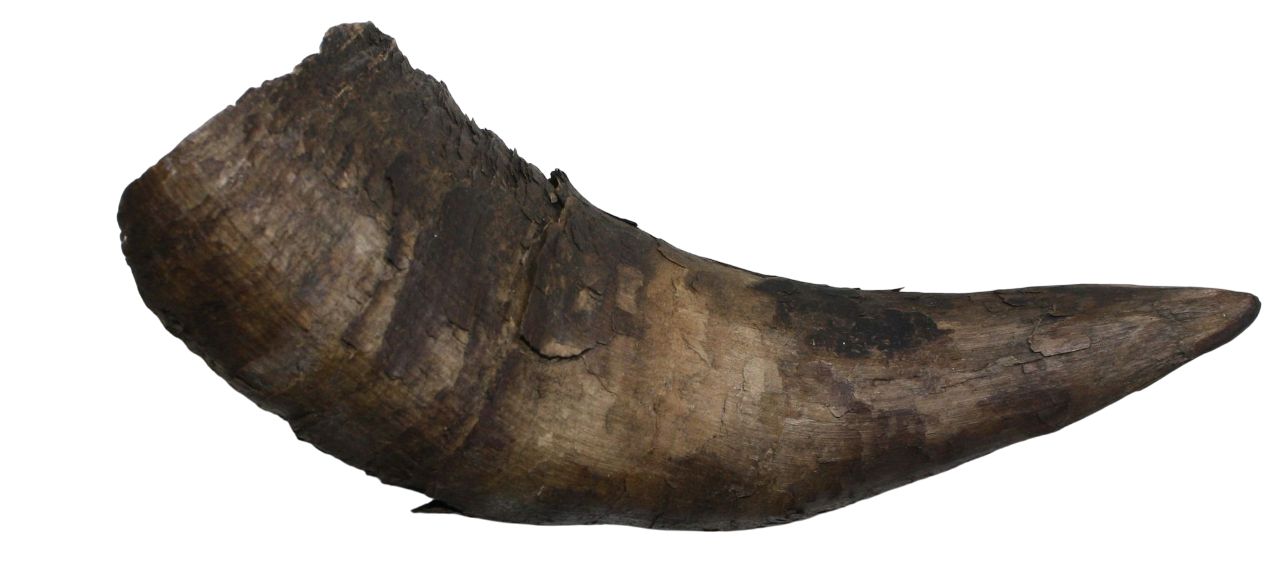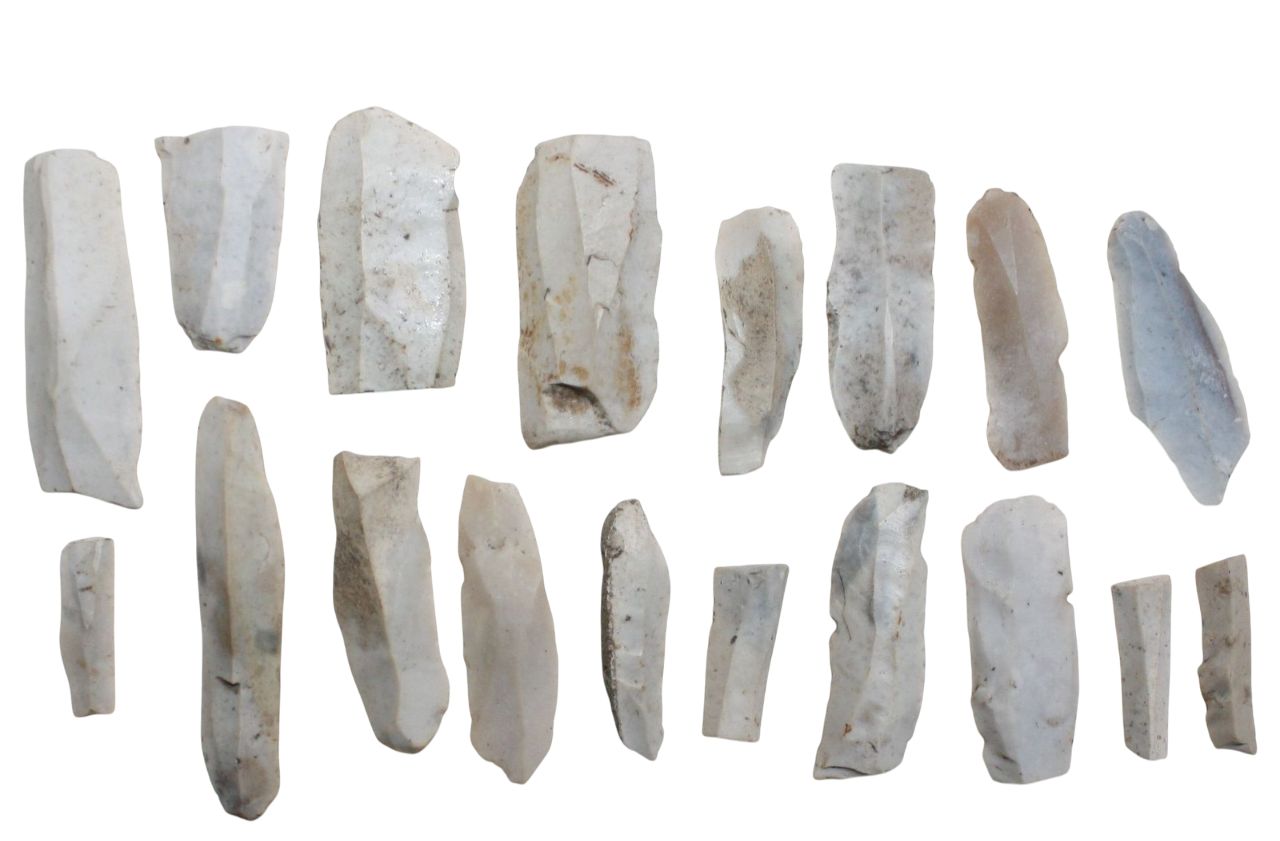The first people are known to have lived in Kirklees over 300,000 years ago, during the lower Palaeolithic period. We know this from a knife found on Rishworth Moor. However, evidence from the Palaeolithic is rare, most finds are from the Mesolithic period starting around 10,000 years ago. Early humans were hunter-gatherers who moved from place to place depending on the seasons and the availability of food. In the warmer months, they set up temporary hunting camps in the high Pennines, particularly between Marsden and Saddleworth.
At this time, the landscape was made up of woodland and grassland, which supported a rich variety of wildlife. Animals such as red and roe deer, elk, wild pigs, and wild cattle roamed the area, while the forests offered food like berries, nuts, and roots. These resources sustained the first communities who travelled through what is now Kirklees.
Tools, Technology and Daily Life
To hunt and gather food, Mesolithic people developed advanced stone tools, mainly made from flint. Flint is a sharp, glass-like stone that was not naturally found in Huddersfield. It is thoughts to have been transported from areas such as the East Yorkshire coast, though it is still unclear whether this was through trade or long-distance travel.
Flint was shaped by carefully striking it with another stone (a hammerstone) to produce flakes with sharp edges in a process called flint knapping. These flakes were then used to make spears, arrows, and other tools for hunting. The remains of these tools, along with patches of burnt ground thought to have been hearths, have been found scattered across the moorlands of the Pennines.
“The hearths and associated finds tell a more complex story than simply that of fire used for warming and cooking, but of a complex suite of activities including heating flint and within which the fire served a central social role… [They] may be central socially or key spiritually and symbolically to understanding such part societies.” From ‘“When the last fires were put out: ethnographic analogy and the symbolic use of fire in the Palaeolithic and Mesolithic’ (2010)
People lived in temporary shelters, like tents made from wood and animal skins, and wore clothing made from hides to keep warm. Their lifestyle required great knowledge of the natural world, including the behaviour of animals and seasonal changes, as they moved in search of food and other resources.
Food Preparation and Preservation
Mesolithic people were skilled at preparing and preserving what they ate. They cooked meat over open fires and learned how to store things like nuts and dried berries for the winter months, when fresh supplies were hard to find. Fishing also became an important way to get meals, and people used nets and small canoes to catch fish from rivers and lakes.
Being able to store what they ate and cook meals was an important step in human development. It meant people could survive more easily in colder or harsher places, and it also allowed them to plan ahead by saving supplies for the winter or for times when hunting and gathering were more difficult.
Art, Decoration and Cultural Life
Although there is limited evidence of Mesolithic art in Huddersfield itself, we know from archaeological discoveries across Europe that people at this time created jewellery from bones, tusks, and shells. They also used ochre, a red clay, to decorate their bodies with patterns. In other regions, people painted images of animals such as bison, horses, and deer on cave walls, suggesting a shared culture of symbolic art and expression.
These decorative practices help us understand that early humans had not only practical needs but also social and cultural traditions that gave meaning to their way of life.
Evidence in the Huddersfield Landscape
Several important archaeological sites have been discovered in and around Kirklees. A trench from the Mesolithic period uncovered flint tools that closely resembled those found at March Hill, reinforcing the area's significance in the study of early human settlement. Other nationally significant sites include Warcock Hill, Lominot, March Hill and Way Stone Edge.
The tradition of flint collecting from eroded areas in the upland peat moorlands of the Pennines provided some of the earliest regional studies of Mesolithic life in England. These findings form a key part of the local historical record and show how Huddersfield fits into the wider story of Britain's prehistory.
Changing Ways of Life
Over time, communities began to move away from a nomadic lifestyle and started settling in one place. They began experimenting with farming in small clearings or garden-like areas, rather than the big fields we imagine today. People also started to keep and tame animals. These changes eventually led to the Neolithic period, one of the most important shifts in human history, as it laid the foundations for permanent homes and the growth of early civilisations.
